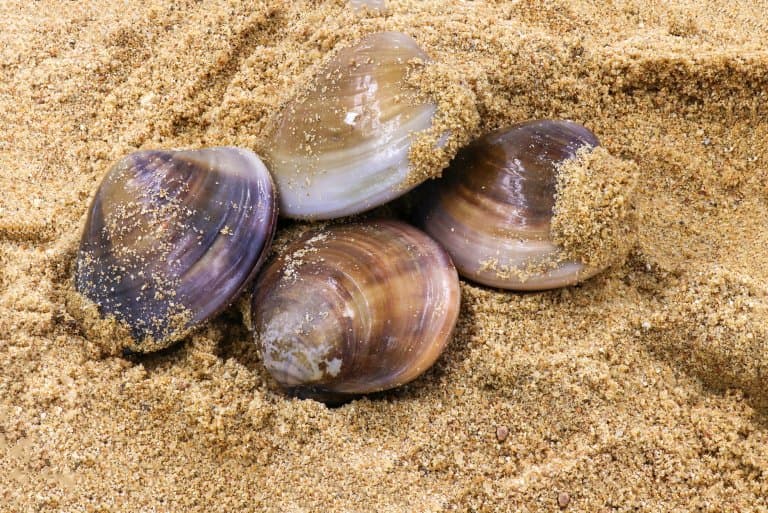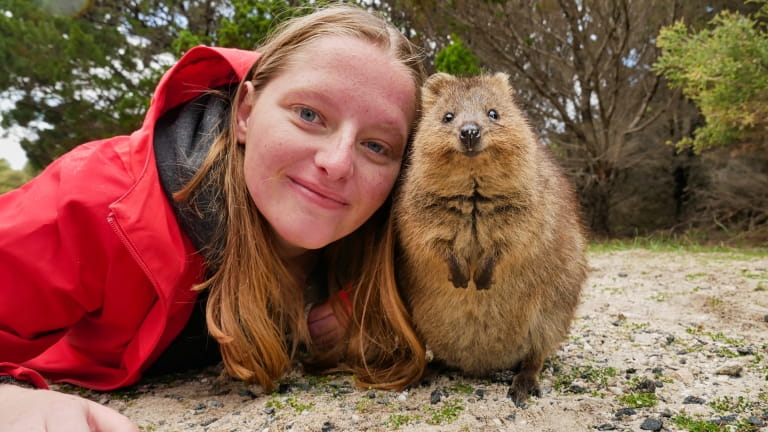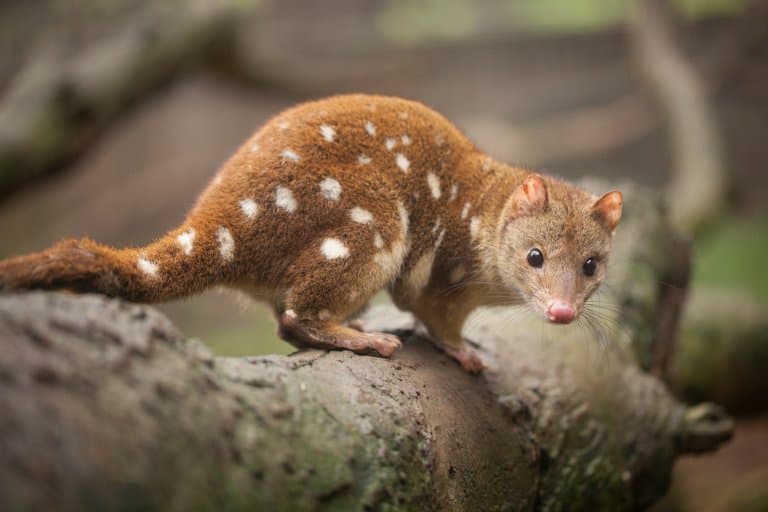This page includes all animals that start with the letter Q that we plan to cover on Fact Animal. As we publish new content, each of these animals will be linked to their dedicated profile fact pages.
From the Qinling Panda to Queen Alexandra’s Birdwing, read extraordinary facts about animals beginning with the letter Q.
Q
Qinling Panda
Quagga
Quagga Mussel
Quahog
Quail
Quelia
Quail-dove
Quail-plover
Quail-thrush
Quailfinch
Quaker Parakeet
Quarter Horse
Queen Alexandra’s Birdwing
Queen Angelfish
Queen Conch
Queen Coris
Queen Snake
Queen Triggerfish
Queen Victoria Riflebird
Queenfish
Queensland Grouper
Queensland Lungfish
Quetzal
Quilback
Quokka
Quoll
Please see our Animal A-Z list for animals that start with different letters.
Animal Names That Start With Q
Read on for an overview of each of the animals listed above that begin with the letter Q.
Qinling Panda
The Qinling panda is a subspecies of the giant panda that wasn’t recognised until 2005. Rather than black and white fur, it has dark and light brown fur.

Fun Fact: The Qinling panda can only be found in the Qinling Mountains, China. There are estimated to be below 100 Qinling pandas living in the wild today.
Quagga
The Quagga was a subspecies of the Plains zebra from South Africa that went extinct in the late 1800s. It had characteristic zebra stripes at the head that faded to a more uniform colour at the back.

Fun Fact: Only one quagga was ever photographed alive, yet this was the first ever animal to have its DNA sequenced.
Quahog Clam
The Quahog is also known as the hard clam, and is an edible mollusk native to North and Central America.

Fun Fact: This clam is able to use it’s muscles to ‘walk’ across sand to seek a mate, or bury itself. However, they are rather slow – capable of moving 1-2 inches in about 15 mins!
Quail
Quail are small game birds in several genera of around 45 species. The most common species are often eaten, used for egg consumption, or hunted. They are known for their distinctive calls.

Fun Fact: Quail are often reluctant to fly, and will instead run away from a threat. Despite this, they are a migratory bird and will fly as far as Africa each year.
Quelia
Quelea is a genus of small African passerine birds in the weaver family. These are small and look like finches or sparrows, with robust seed-eating beaks.
Fun Fact: Red-billed Quelia are the most populous wild bird in the world with an estimated 1.5 million in Africa today.
Quail-dove
There are two candidates for the name of Quail Dove, both in the Dove family. Geotrygon and Letotrygon are both commonly called quail-doves. They’re ground-dwelling Neotropical birds that live in forested habitats.
Fun Fact: As forest birds, many, like the crested quail Geotrygon versicolor, are beautiful birds with colourful blue and purple plumage and tufted crests.
Quail-plover
The Quail plover is a tiny species of ground bird in the buttonquail family, Turnicidae. They’re brown and dappled, and reach up to around 20 grams in weight.
Fun Fact: While once thought to be in the true quail order, these are not closely related to quails, and have now been placed in the Charadriiformes order with wading birds and Auks.
Quail-thrush
Quail thrushes are not quails, nor thrushes, instead they are a unique genus native to New Guinea and Australia. These are elusive birds and the males can have strikingly contrasting patterns of black and brown plumage.
Fun Fact: Their closest relatives appear to be the Jewel-babblers, another little-known genus of birds who, like the quail thrushes are well adapted to evading comprehension in the forest understory.
Quailfinch
The quailfinch is a small finch from the grasslands of Africa. They have distinctive red, seed-earing beaks and claws adapted for standing on the ground.
Fun Fact: Despite their diminutive stature, these are fiercely terrestrial birds, and will defend their space against intruders.
Quaker parakeet
The Quaker parrot or parakeet, also known as the Monk parakeet, is a true parrot from South America. It’s a small, bright green parrot that is a popular pet species.
Fun Fact: Like many parrot species, these are very tough and adaptable birds and have formed feral and invasive populations outside of their native ranges, including some in Europe.
Quarter horse
The Quarter Horse is an American breed of horse famous for its speed. Its name comes from its ability to beat other horse breeds in races of 1⁄4 mi (0.40 km) or less.
Fun Fact: This breed has been clocked at speeds up to 71 km/h but is also popular as a working ranch horse on account of its strength and (relative) intelligence.
Queen Alexandra’s Birdwing
Queen Alexandra’s Birdwing are the largest species of butterfly in the world found in Papua New Guinea.

Fun Fact: Female Queen Alexandra’s Birdwing are generally larger than males, and can have a wingspan of up to 28cm (11 inches!)
Queen angelfish
This warm water, ocean-floor fish enjoys the beautiful coral reefs of South America. It’s named for its distinctive head spot, or crown, which distinguishes it from similar-looking species.
Fun Fact: The breeding dynamics of this angelfish are not very queen-like. Males look after large harems of females, with whom they’ll breed only on a full moon.
Queen conch
The Queen conch is a huge sea snail and one of the largest molluscs in the Caribbean. It grows to over 35cm across and spends its time doing herbivorous snail things in the seagrasses.
Fun Fact: Like other conches, these large snails have surprisingly well-developed eyes on the end of stalks which give them a totally different vibe when you make eye contact with one.
Queen Snake
Queen snake are a small species of semi-aquatic non-venenmous snake from North America. They live near clean running streams and water with rocky bottoms that allow them to prey on crayfish.

Fun Fact: They are sometimes known as the ‘banded water snake’, ‘brown queen snake’ or ‘diamond-back water snake’.
Queen triggerfish
This reef-dweller lives in the shallows of the Atlantic coast. It’s a stunningly beautiful fish with stripes of blue, green, turquoise and yellow, which makes it popular in aquariums.
Fun Fact: This species is able to change colour slightly, which it does either to match its surroundings or when it’s stressed.
Queen coris
This fish is also known as the sand wrasse and is another popular fish for its beautiful colouration. They change dramatically in colour from juvenile to adult, growing from 20cm to 60cm into a bluish-green adult.
Fun Fact: Some think that this colour shift reflects the change in behaviour of the fish as it matures, changing in colour to match the shift in its preferred depth as the fish ages.
Queen Victoria riflebird
The Queen Victoria riflebird is a resident bird of paradise in Queensland, Australia. Females are slender with a thrush-like colouration and males are black with an olive abdomen and an iridescent purple sheen.
Fun Fact: As a bird of paradise, the male of this tiny species has an elaborate mating ritual. Opening his wings wide, he reveals a vivid turquoise patch under his chin and performs an intricate mating display.
Queenfish
The queenfish is native to the Eastern Pacific from California to British Columbia. This is a 30cm, elongated fish that’s usually blue-grey with a horizontal line.
Fun Fact: Despite being a popular target of sport fishing, not a lot is known about this species, but it’s an important prey species for many larger animals.
Queensland grouper
Not to be confused with the notorious Queensland groper, this enormous marine fish has a wide range across the Indo-Pacific and can grow up to 2.7m long in exceptional circumstances.
Fun Fact: This is one of the largest and heaviest bony fish in the ocean, with the record weight reaching 400kg. As juveniles, they’re intricately patterned and grow into plain giants as they age.
Queensland lungfish
The Queensland, or Australian lungfish is one of only six lungfish species left in the world. These are living fossils, and have a lung which allows them to stay fixed in drying pools, breathing air until the rains come back to fill them up again.
Fun Fact: As Sarcopterygians, lungfish are more closely related to your momma than they are to bony fish like trout and salmon. They diverged from the ancestors of humans around 400 million years ago, at least 50 million years after separating from the other fish lineages!
Quetzal
Quetzal are incredibly beautiful, colorful birds in the trogon family that are found in the forests of South America.

Fun Fact: Quetzal were considered sacred by the Aztecs and the Maya, who considered them as ‘gods of the air’, and symbols of goodness and light, and depicted them in native art.
Quillback
The Quillback, also referred to as the (easily misread) “carpsucker”, is a true sucker from North America. It’s carp-looking, though unrelated, and has large silvery scales. They don’t usually grow to more than a meter long.
Fun Fact: These are very long-lived fish, with ages of up to 52 years being reliably documented.
Quokka
Quokka, sometimes known as short-tailed scrub wallabies, are small wallabies about the size of a cat that are native to Australia.
Fun Fact: Quokka skulls have small jaws and protruding teeth that make them look as if they are constantly smiling.
Quoll
The quoll is a small carnivorous marsupial found in Australia, Tasmania and New Guinea.
Fun Fact: When the offspring of the tiger quoll are born they are approximately the size of a grain of rice!
What Other Animals Begin With ‘Q’?
That completes our list of animals that begin with the letter Q.
Hopefully you’ve learned a few new ones, but are there any that we’re missing in our list that you would like to see covered?
If so, get in touch. Please see our Animal A-Z list for animals that start with different letters.


